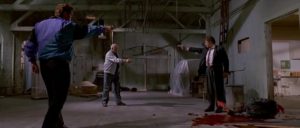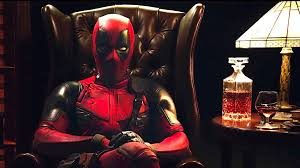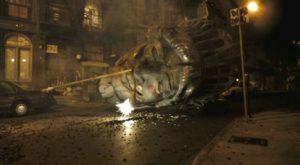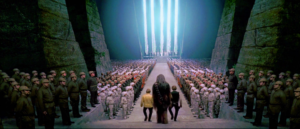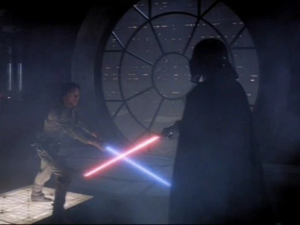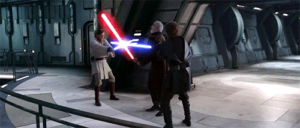The considerable success of the movie can be attributed to the context of production of the movie. Welles had been given a budget of $500,000, something unbeknown and out of the ordinary for a generally unknown director, however his works within the theatrical aspect of show business was noticed by Hollywood due to his success within orchestrated plays and radio specials from the Mercury Theatre. It was in 1938 that Welles conducted the broadcast that would put him in the spotlight for Hollywood studios, when he broadcast the “War of the Worlds” in which he imitated that a galactic outbreak of aliens had ensued. The play was orchestrated in the form of a newscast, which sparked cultural controversy and skyrocketed Welles as one of the most spoken of actors that were in the West.
Soon after, Welles would be approached by RKO Studios, who were mainly known for their comedy and monster movies. In an effort to improve their reputation as a significant studio that could compete artistically, RKO studios offered a contract to Welles that was surreal in regards to the time, which gave him drastic artistic control, an offer Welles happily accepted, allowing him to star in the movie, direct the movie, and additionally employ actors from the Mercury Theatre he had become notorious from.
Another factor that affected the finality of the film can be identified with the films parallelism to the life of a William Randolph Hearst. The plot of the movie was widely believed to be a fictional rendition of him, due to Hearst being renowned for newspaper publishing, aspiring in politics and being an enthusiastic art collector. Hearst’s influence throughout show business and specifically the media, allowing for him to shun various sources of mass information and even offered the studio money to destroy the film completely. Therefore, this effected Citizen Kane’s box office, which vastly contradicts its title of the greatest movie ever made, and drastically morphed the opinion of the public towards the movie at the time, only being appreciated for its cinematic excellence years later.


